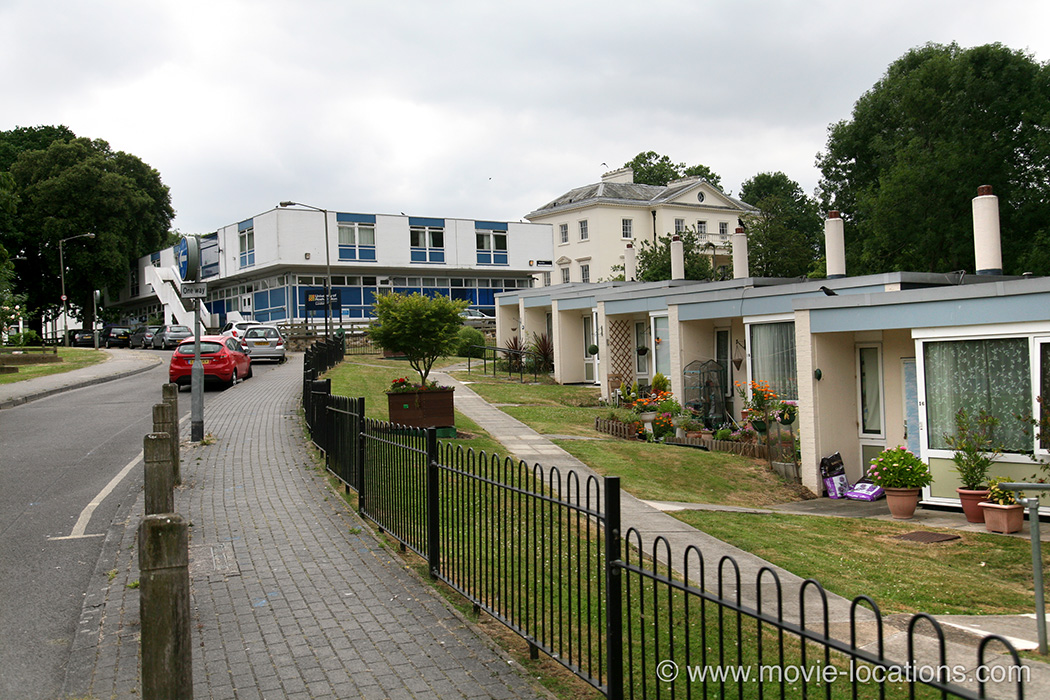Fahrenheit 451 | 1966


- DIRECTOR |
- François Truffaut
This oddity is not a definitive filming of Ray Bradbury’s story of a society in which books – those dangerous transmitters of ideas and emotions – are banned and the task of firemen is to seek out and incinerate any printed material. The title refers to the temperature at which paper begins to burn (though this seems to have been more speculation than scientific fact).
The film was a real departure for François Truffaut, leading light of the French New Wave movement, not only in subject matter but also as his first film in colour and his first in English – a language he barely spoke.
Truffaut had no interest in futuristic aspects of the sci-fi genre. His film is his heartfelt, humanistic tribute to the power of the written word (among the proscribed works being burned are copies of Cahiers Du Cinema, the magazine on which Truffaut began his career writing as a film critic).
For all sorts of reasons, it was not a happy experience for the director. His clashes with star Oscar Werner, with whom he’d worked so successfully on Jules Et Jim in 1962, are well documented. Nevertheless, this is a sprightly, inventive film with mischievous surreal flourishes (look for the briefest glimpse of Anton Diffring in drag as the school’s headmistress) and packed with Hitchcockian touches.
The lushly romantic score was even written by longtime Hitch collaborator Bernard Herrmann, and the cinematography is by director-to-be Nicolas Roeg who seemed to encourage Truffaut’s experimentation with the startling use of Roeg’s trademark vivid reds.
The production was based at Pinewood Studios in Buckinghamshire, where interiors were filmed and where the ‘fire station’ was built.
Presumably Truffaut was delighted that the production briefly decamped to his native France to find the elevated railway on which Clarisse (Julie Christie) strikes up a conversation with fireman Montag (Werner), her neighbour.
This monorail was a one-mile stretch of test track built in in Châteauneuf-sur-Loire, about 15 miles east of Orléans, France, by SAFEGE (a technological consortium which included tire-maker Michelin and the Renault motor company. You won’t be able to ride it – the rail has long since been dismantled.
The other practical locations can still be seen around southeast England.

The opening raid is on the late-Fifties Alton Estate, Highcliffe Drive in Roehampton, south of Barnes in southwest London. The particular soulless grey block from which the furtive bibliophile narrowly manages to escape, is Dunbridge House, one of five near-identical residential highrises.
Alongside the building’s southwest entrance, from which the literary outlaw flees, the spot of ground on which has secret stash of reading material is burned has since been softened with landscaping and a covering of grass.

Just a few hundred yards below these blocks runs Minstead Gardens, the strange row of indistinguishable flat-roofed bungalows past which, toward the end of the film, the blood-red police car is slowly driven, exhorting the ‘cousins’ to be on the lookout for the fugitive Montag.
The buildings overshadowing these dwellings are part of the University of Roehampton – that imposing classical mansion is the Grade I-listed 18th Century Mount Clare House, which now serves as a hall of residence.
Montag’s own bungalow, where he shares marital numbness with TV and pill addicted Linda (also played by Julie Christie) is 14 Linkway, part of a development called Edgcumbe Park in Crowthorne, Berkshire.
Edgcumbe, the flagship development of the Renway Construction Company, was begun in 1958 and not completed until 1970. It was a bold experiment, ahead of its time. Rather than bulldoze the land, Renway planned the 360 houses, chalets and bungalows around keystone oak, pine, mountain ash and silver birch trees intending to create an environment suiting the landscape.





